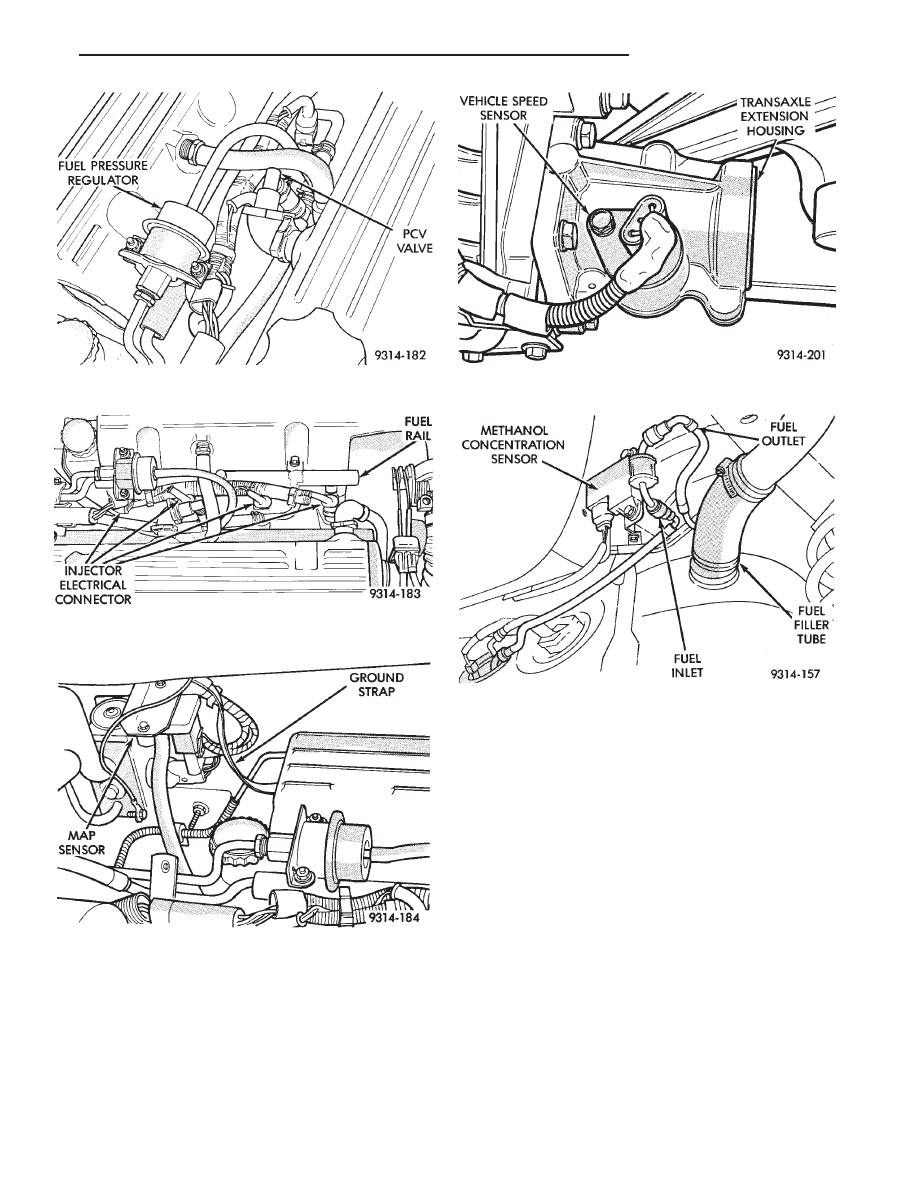Chrysler Le Baron, Dodge Dynasty, Plymouth Acclaim. Manual - part 38

(18) Verify hose from PCV valve is securely at-
tached to the intake manifold vacuum port (Fig. 13).
(19) Check vacuum hose connection between vac-
uum source and fuel pressure regulator (Fig. 13).
(20) Inspect electrical connections at the fuel injec-
tors (Fig. 14).
(21) Inspect the heated oxygen sensor electrical
connector.
(22) Verify engine ground strap is attached to the
intake manifold and the dash panel (Fig. 15).
(23) Inspect all vacuum harness connections and
hoses for leaks.
(24) Verify the harness connector is attached to
the vehicle speed sensor (Fig. 16). Ensure the sensor
and connector are not damaged.
(25) Inspect hose and electrical connections at the
fuel pump. Ensure the electrical connector is fully
seated over the pump module terminals.
(26) Inspect electrical connections at the methanol
concentration sensor (Fig. 17).
Fig. 13 PCV Valve and Fuel Pressure Regulator
Fig. 14 Fuel Injector Electrical Connectors
Fig. 15 Ground Strap
Fig. 16 Vehicle Speed Sensor
Fig. 17 Methanol Concentration Sensor
Ä
FUEL SYSTEMS
14 - 69